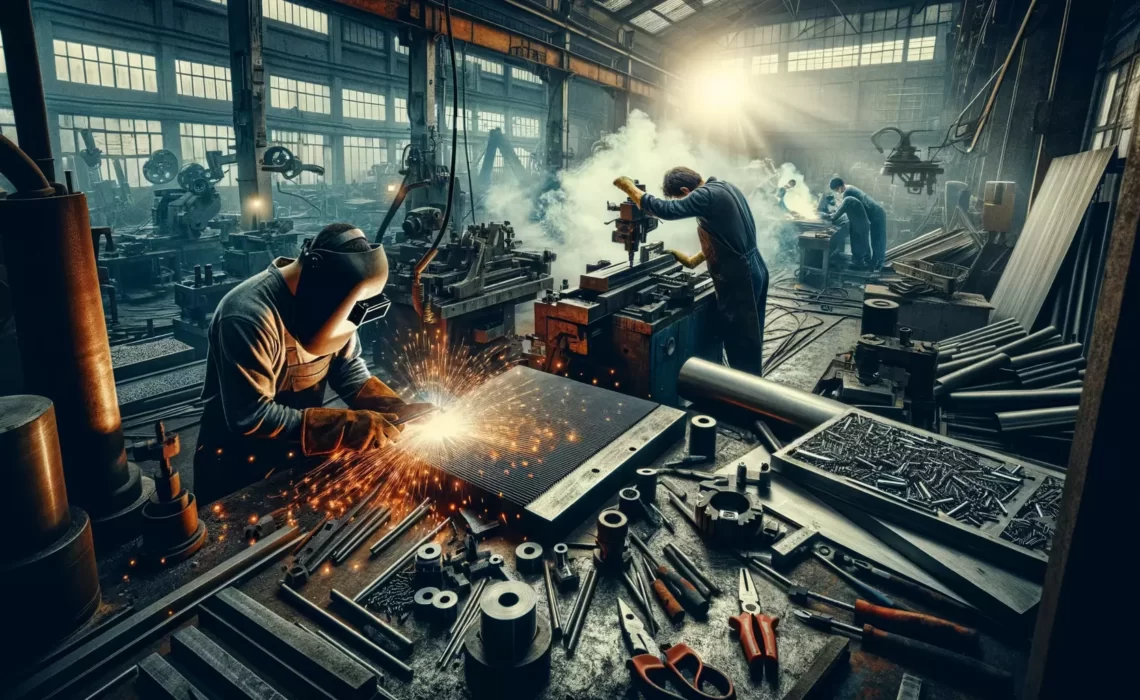In customised metal fabrication, skilled fabricators work to precise and often intricate designs to create bespoke items and structures for individuals and companies alike.
There’s little experienced Metal Fabricators can’t do given enough time, and sometimes, even the most complex and unique projects that would be a challenge for anyone less skilled, can be achieved through their ingenuity and eye for detail.
To help you understand the processes behind bespoke metal fabrication, here are its six stages:
-
Table of Contents
Design
No matter the scale of a project, a design that’s fit-for-purpose will always give great results. Whether a client has an objective for a metal object that’s focused upon great performance and slick functionality, or whether their primary goal is to save money or address environmental needs, experienced metal fabricators will devote their energy and time to anticipating potential problems, and eliminating them during manufacture.
To achieve an effective end result that the client will be satisfied with, the metal fabricator must take highly precise measurements and thoroughly evaluate the site where it will be installed, before designing and manufacturing it. In doing so, they should be able to prevent any problems from occurring that could delay the project and cost the client more money.
-
Prototyping
With a strong prototype that puts the feasibility of a bespoke design to the test, metal fabricators can see how the design works, how difficult or easy it will be to make, and how long the process is likely to take.
By testing how the chosen material behaves with a prototype, they can see whether a cheaper material might be just as effective, and while this process isn’t necessary for every bespoke project, it’s always a good thing to do if hundreds or even thousands of the item are going to be produced.
-
Programming
Following on from the design and prototype stages of the project, is programming. This helps to ensure that only optimum processes are carried out, and can include waste reduction and improved delivery times. For example, the process of laser cutting is very flexible and affordable, and a range of materials, such as brass, steel, copper and aluminium can be cut into complicated shapes.
-
Fabrication
Pre-formed materials, including bar and box section, are used for the majority of bespoke fabrication projects, with the customised parts then being made by way of methods such as cutting and drilling, grinding and welding. With advances continually being made in the realms of technology, fabricators are able to use better and more accurate machines and techniques to give even better results.
-
Metal finishing
The type of finishing process chosen by the metal fabricator, including but not limited to: powder coating, will depend upon factors such as aesthetics, protection from the elements, and what type of metal is being used. Cost will also be factored in, as some finishing processes are more expensive than others, even though they may offer a speedier end result.
-
Assembly and installation
In this final stage, the metal fabricator will assemble the different parts of the product, and they may use washers and bolts to help strengthen the structure. Once assembled, the item will be placed in the desired position at the location, and installed safely and securely.
For metal items and structures that aren’t necessarily run of the mill, which will perform a unique role, fulfil a challenging purpose, or simply look great, metal fabrication services and the skilled fabricators who perform their work with dexterity and creativity, are hard to beat.



